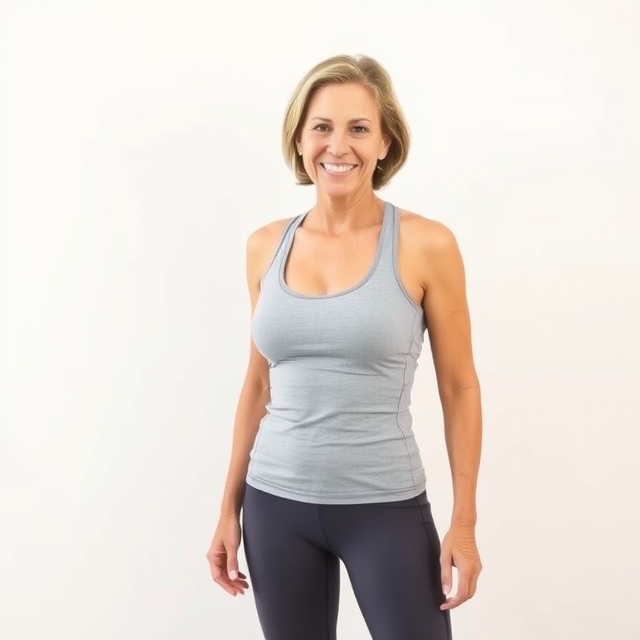How to Track Progress for a 10 lb Weight Loss: 5 Simple Strategies That Actually Work
Losing weight can feel like a long journey, but tracking your progress is one of the most motivating and effective ways to stay on course.

Whether you’re just starting out or trying to shed those last stubborn pounds, understanding how to measure your efforts can keep you motivated and help you reach your goal faster. If you’re a woman over 35 aiming for a 10-pound weight loss, these five strategies will simplify the process and help you see results without feeling overwhelmed.
1. The Power of Photos: Visual Progress Over Time
When it comes to weight loss, sometimes the numbers on the scale don’t tell the whole story. That’s where photos come in—capturing visual changes that are often more noticeable than what a number can show.
How to Do It:
- Start by taking a full-body photo at the beginning of your journey. Wear something that fits snugly but comfortably, so you can see how your body changes over time.
- Take photos in the same outfit every week or every two weeks, standing in the same location with similar lighting.
- Front, side, and back views will give you a full picture of your progress.
2. Body Measurements: A Non-Scale Way to See Progress
Many women notice changes in their measurements—waist, hips, thighs—even before the scale reflects their hard work. Measuring different areas of your body can be a much more accurate way to track fat loss, especially since muscle gain can sometimes offset weight loss on the scale.
How to Do It:
- Grab a flexible measuring tape and measure your waist, hips, thighs, and bust.
- Track these measurements once a week. Record them in a journal or app to compare them over time.
- Be consistent—measure in the same spot on your body each time, and don’t pull the tape too tightly or leave it too loose.

3. Clothing Fit: When Your Favorite Jeans Tell the Truth
One of the most rewarding ways to track weight loss progress is how your clothes fit. You might notice your favorite pair of jeans fitting looser or a dress that used to feel tight now gliding on with ease. This method works because it’s not tied to numbers—it’s all about how you feel in your clothes.
How to Do It:
- Pick one or two pieces of clothing that are slightly tight at the beginning of your journey.
- Try them on once a month and note how they fit. Are they easier to zip up? Do they feel more comfortable around your waist or thighs?
- This method gives you a realistic sense of how your body is changing in a way that matters most to you.

4. Tracking Progress with Apps: Modern Tools for Motivation
There are a host of apps designed to help you track everything from your calorie intake to your activity levels and weight loss progress. These tools provide an easy way to monitor your habits, set goals, and get reminders to keep moving toward your 10-pound weight loss goal.
How to Do It:
- Download a reliable weight loss or fitness tracking app like MyFitnessPal, Lose It!, or Fitbit.
- Log your daily food intake, exercise, and weight. Some apps even allow you to track body measurements and progress photos.
- Use the app’s analytics tools to review your progress weekly and adjust your habits as needed.
5. Celebrate Non-Scale Victories: The Little Wins Matter
While losing 10 pounds is a fantastic goal, it’s important to celebrate other victories along the way—like having more energy, sleeping better, or feeling stronger during workouts. These small but significant changes are signs that your lifestyle changes are paying off, even when the scale doesn’t show it yet.
How to Do It:
- Keep a journal where you write down non-scale victories (NSVs). Did you run a mile without stopping? Maybe you noticed your skin is glowing, or you didn’t feel out of breath carrying groceries.
- Reflect on these victories weekly. They are an excellent way to stay motivated and remind yourself that progress isn’t just about weight.
Final Thoughts: Stay Consistent and Keep Going
Tracking your progress is about much more than just hitting a number on the scale—it’s about recognizing the changes happening inside and out. Whether it’s through photos, body measurements, how your clothes fit, or celebrating the non-scale victories, staying in tune with your body will help you stay motivated on your journey to losing 10 pounds.
And remember, progress takes time. Some weeks may feel slower than others, but consistency is key. By using these five strategies, you’ll be able to see and celebrate every step of your transformation. Plus, the joy of watching your body change in a positive way is one of the best rewards of all.



